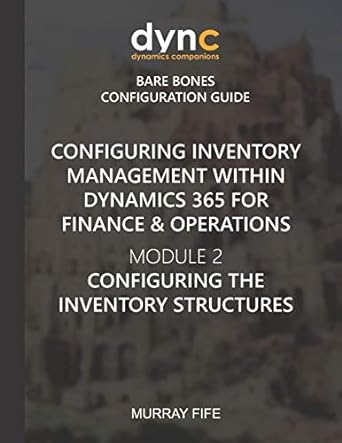Question
CPG Bagels starts the day with a large production run of bagels. Throughout the morning, additional bagels are produced as needed. The last bake is
CPG Bagels starts the day with a large production run of bagels. Throughout the morning, additional bagels are produced as needed. The last bake is completed at 3 p.m. and the store closes at 8 p.m. It costs approximately $0.20 in materials and labor to make a bagel. The price of a fresh bagel is $0.60. Bagels not sold by the end of the day are sold the next day as day old bagels in bags of six, for $0.99 a bag. About two-thirds of the day-old bagels are sold; the remainder are just thrown away. There are many bagel flavors, but for simplicity, concentrate just on the plain bagels. The store manager predicts that demand for plain bagels from 3 p.m. until closing is normally distributed with a mean of 55 and a standard deviation of 22.
1. Suppose that the store manager is concerned that stockouts might cause a loss of future business. To explore this idea, the store manager feels that it is appropriate to assign a stockout cost of $5 per bagel that is demanded but not filled. (Customers frequently purchase more than one bagel at a time. This cost is per bagel demanded that is not satisfied rather than per customer that does not receive a complete order.) Given the additional stockout cost, how many bagels should the store have at 3 p.m. to maximize the stores expected profit?
Step by Step Solution
There are 3 Steps involved in it
Step: 1

Get Instant Access to Expert-Tailored Solutions
See step-by-step solutions with expert insights and AI powered tools for academic success
Step: 2

Step: 3

Ace Your Homework with AI
Get the answers you need in no time with our AI-driven, step-by-step assistance
Get Started


